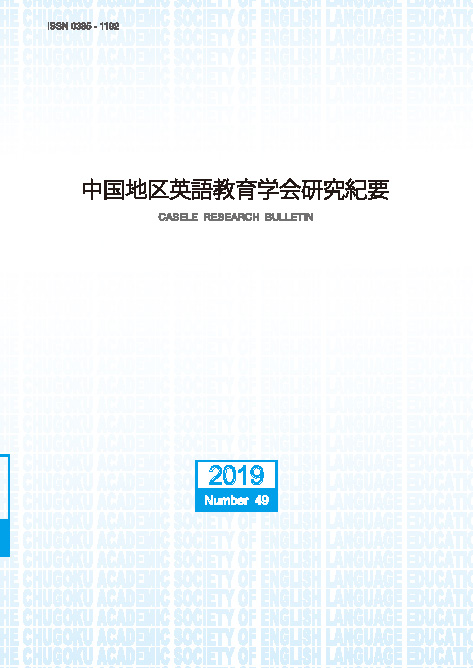Current issue
Displaying 1-10 of 10 articles from this issue
- |<
- <
- 1
- >
- >|
-
Subject area: Article
2019 Volume 49 Pages 1-10
Published: March 31, 2019
Released on J-STAGE: April 01, 2020
Download PDF (732K) -
2019 Volume 49 Pages 11-20
Published: March 31, 2019
Released on J-STAGE: April 01, 2020
Download PDF (932K) -
Subject area: Article
2019 Volume 49 Pages 21-31
Published: March 31, 2019
Released on J-STAGE: April 01, 2020
Download PDF (1464K) -
Subject area: Article
2019 Volume 49 Pages 33-42
Published: March 31, 2019
Released on J-STAGE: April 01, 2020
Download PDF (975K) -
Subject area: Article
2019 Volume 49 Pages 43-53
Published: March 31, 2019
Released on J-STAGE: April 01, 2020
Download PDF (1031K)
-
Subject area: Article
2019 Volume 49 Pages 55-64
Published: March 31, 2019
Released on J-STAGE: April 01, 2020
Download PDF (763K) -
Subject area: Article
2019 Volume 49 Pages 65-74
Published: March 31, 2019
Released on J-STAGE: April 01, 2020
Download PDF (1061K)
-
Subject area: Article
2019 Volume 49 Pages 75-85
Published: March 31, 2019
Released on J-STAGE: April 01, 2020
Download PDF (1006K)
-
Subject area: Article
2019 Volume 49 Pages 87-96
Published: March 31, 2019
Released on J-STAGE: April 01, 2020
Download PDF (592K) -
Subject area: Article
2019 Volume 49 Pages 97-106
Published: March 31, 2019
Released on J-STAGE: April 01, 2020
Download PDF (817K)
- |<
- <
- 1
- >
- >|
